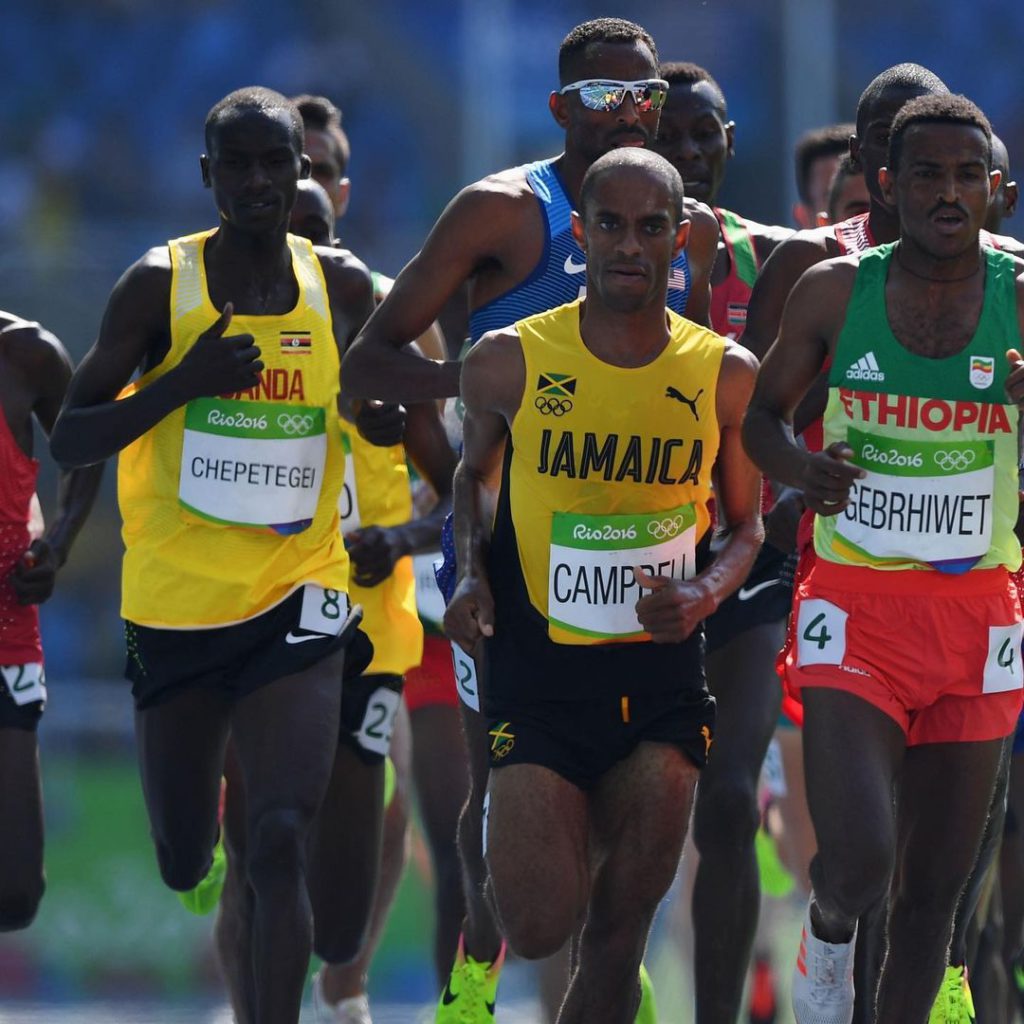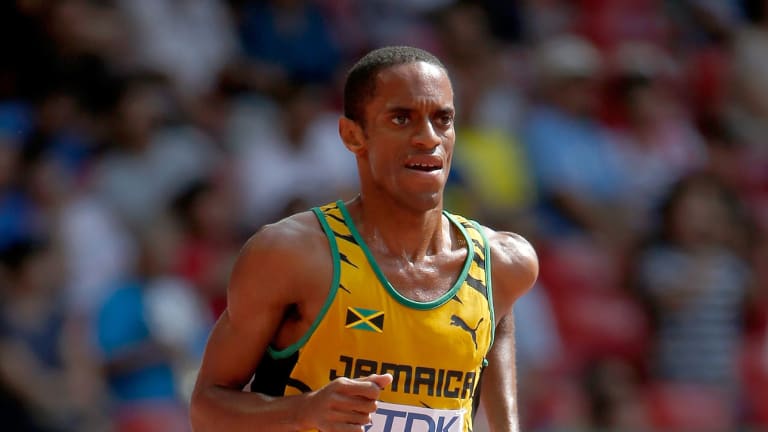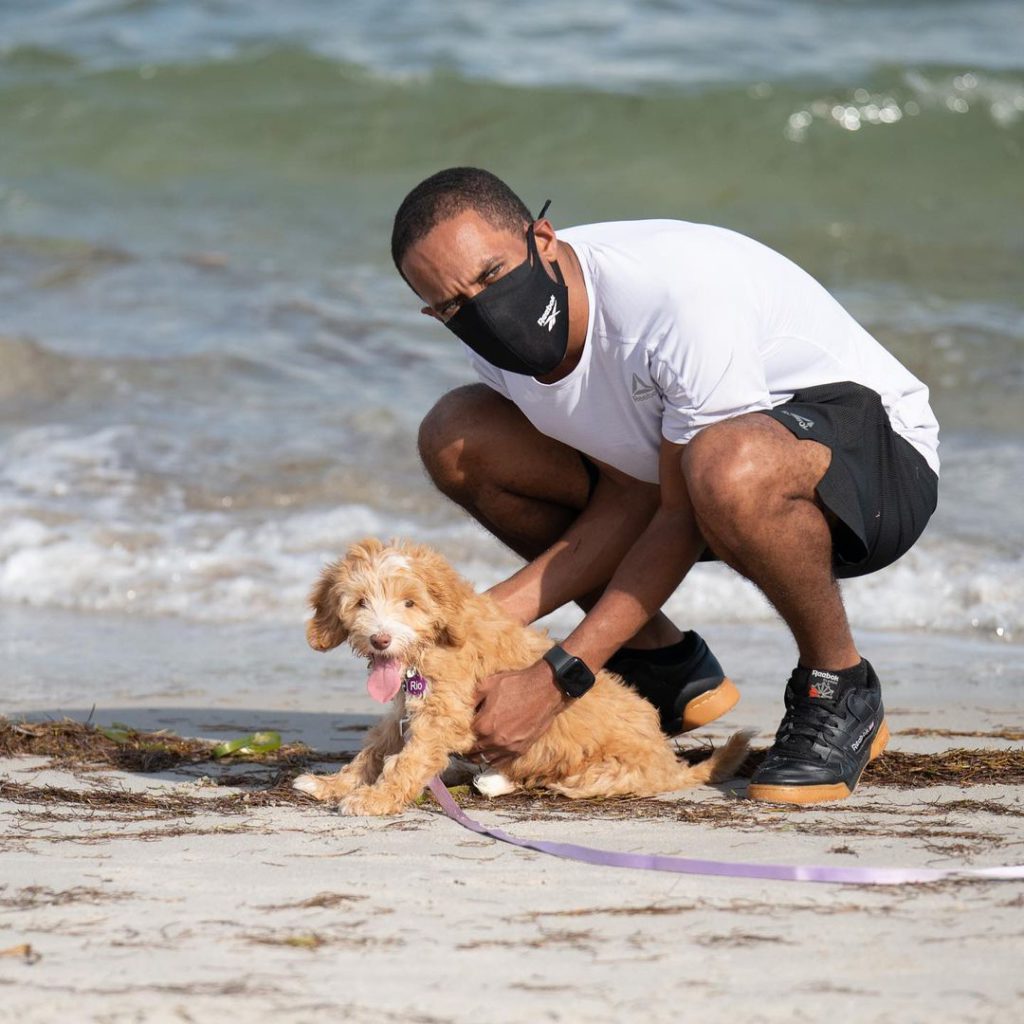Kemoy Campbell, Olympic athlete and former distance runner is now based in Miami but originally hailed from Rose Hill, Manchester, a small community in Jamaica. It was there at 15 years old, he would have run his first competitive race, asked by a teacher to participate last minute in a Sports Day track event. Much to his surprise, he won with ease against some of his school’s top athletes. Campbell was immediately recruited to the team. Not expecting much from the experience, the young runner was won over not by his obvious natural talent on the track but by the sense of community, he found within the team.
“The coach recruited me and I went to practice a few days. While I was at practice I realized it’s kind of a community setting to me. I felt like I belonged there.”
Sports would not get in the way of the CSEC bound Campbell’s scholastic achievements. The young track star would end up going on a hiatus as he attempted to figure out how to balance academics and track. Discovering that track meets took place on the weekends and would hardly affect his attending classes, Kemoy rejoined with renewed enthusiasm.
“After that, it basically started from there where I went to my first road race and won the 14-16 age group. From there I fell in love with distance running.”

Campbell’s determination to do well in school was fuelled by a need to make his father proud. This would prove convenient however as a hurdle many student-athletes dreaming of competing faced is a minimum GPA benchmark to reach to participate in sporting events.
“You know it is. You have to have your grades up to compete at Champs. Even that helped me to stay focused and make sure I did what I was supposed to.”
Time for Campbell flew by in a blur of practice and competition. The prospect of college scouts recruiting their newest athletes peaked over the horizon. The track star recalls some of the top contenders for his potential schools as the University of Arkansas, University of Texas and Pennsylvania State University. Despite eventually attending Junior College in Texas, the University of Arkansas kept an interest in Kemoy and the school ultimately was where he ended up attending.
“[The University of Arkansas] came to see me after I was competing [at the Junior College] and decided that this is the kid they’d love to have on their team. And because I had been keeping up with them, I saw how well [their team] performed at track and field. I wanted to go with the school that shared the same goals as me.”
Adjusting to the gruelling daily training regimes at Arkansas would prove to be a difficult task for Campbell. He was faced with the task of not only getting his body in shape for his benefit but catching up with teammates that might have been for the first time, more advanced than he was.
“I remember them going on 8 mile runs in the afternoon and I went there and I wasn’t even close to 8 miles! So that kind of threw me for a loop and when I started I was so tired on some of the runs. I could hardly manage [it]. I had to basically reinvent myself. I was saying to myself ‘I wanna be the best on the team’. The only way I would be the best on the team is by training with the best and then training to be better than the best. I did that and then I was the best on the team.”

After mastering the ins and outs of his new college track team, Kemoy turned a laserlike focus onto his next mission: gaining sponsorship. The athlete explains the difficulties obtaining sponsorship for a runner in an event such as long-distance, but dishes on his reputation allowing him a leg up over the competition.
He signed a contract with New Balance after a coach was inspired by Campbell’s persistence on the track. The Jamaican sprint star became the only male trained by that coach at the time. After learning all he could with New Balance, the transition was made to the renowned Reebok, a connection he made through his coach at New Balance. There, he continued to succeed before the fateful day of February 19, 2019.
When asked whether or not he had felt a decline in health in the period leading up to his sudden collapse on live television, he admits that perhaps his failure to listen to his body could have avoided that situation.
“I think I should have known better. A lot of us as athletes, don’t really take what we feel our bodies doing as something serious. When it started with me, I was just out running in practice some days and all of a sudden I couldn’t breathe.”

Despite this, Campbell would often attribute his discomfort to the intensity of whatever workout he had been doing. He rationalized that he had never experienced heart issues before, so it couldn’t possibly be that. It was only when the athlete started to feel chest pains in the absence of a heavy workout that he finally decided to see a cardiologist. The appointment, unfortunately, wouldn’t have come soon enough.
“It was a Thursday when I said I was going to see the cardiologist, the race was Saturday. I went racing Saturday and that’s when I collapsed. I was supposed to see the cardiologist the Monday.”
Kemoy describes feelings of defeat leading up to the race. He hadn’t been finishing practices due to his chest pains, making participating in Saturday’s competition all the more important. He doesn’t regret attempting the race but understands now how dangerous the decision might have been.
“It was just gonna go pace a race and use it as work out. That’s what my plan was. After, it just ended up that the incident happened and I couldn’t really do anything about it.”
He describes his feelings after waking up two days later in the hospital.
“I thought of myself as a really healthy person and then all of sudden to hear that you collapsed in a race and your hearts stopped. To me, that was very scary. I started thinking about what I could’ve done differently, did I do the right thing by racing. All of that.”
However, Campbell remains grateful that the incident happened when it did. He reflected that if it had happened during practice, there wouldn’t have been such a quick medical response. His positive outlook was contrasted by the fear and doubt his family experienced. The racer described his loved ones, after assuring his survival, questioning whether he should retire immediately.
“When I woke up I could see how scared they were. I was just like ‘I never want to put people through this again’. I would never recommend that people feeling some sketchy stuff in their bodies go out and put their lives at risk.”
Retirement wasn’t an automatic decision for Kemoy Campbell and proved a difficult one to make as well. Track and field had been all he knew for much of his life and a financial provider for him and his family. The decision might not have been made if it hadn’t been for chest pains he experienced after a run some time post-incident. He called his doctor who told him point-blank to stop running and shortly after, the official announcement of his retirement came. He would come to find out that the cause of his heart condition was a virus left unchecked that steadily got worse because of his heavy training regime.
Campbell continues to immerse himself in the world of track and field. The retired racer’s talents are now put to good use training the next generation of track stars. He hopes to shape someone to one day surpass his own talents.
“I still love the sport. I don’t watch it as much anymore but I still love [it]. I still go to track meets. The kid that I coach right now started the same way I did where he played a little soccer, football in Jamaica. The other day I brought him to a road race and he won in his age group. So that’s my way of giving back to the sport. If I can coach someone, especially a Jamaican, who can even get better than I did, that would be a major accomplishment.”
He ends with a nugget of wisdom he wishes he would’ve known at 15, as a fresh and talented runner:
“Set goals no matter what. Set short-term goals and long-term. [That] will help keep your passion alive.”



